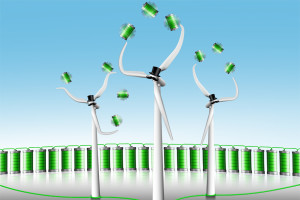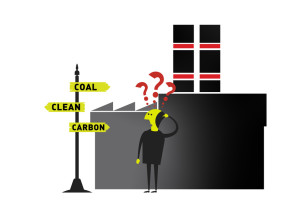Facts, Figures, and Findings from EPRI Research, Reports, and Other Sources

Off-the-Shelf Sensors Monitor "Auras" of Motors, Pumps, and Other Equipment for Malfunctions
Electrical and mechanical components in power plants emit an "aura" of acoustic and electromagnetic signals that vary during malfunctions. An EPRI feasibility study points to the potential for using ambient sensors to measure these signals for comprehensive plant health monitoring at significantly lower cost than current inspection methods. Traditional plant monitoring relies on sensors embedded in equipment, which can be costly and impractical to implement comprehensively. EPRI evaluated the concept of an integrated system of low-cost, commercially available ambient sensors to monitor acoustic and electromagnetic emissions in large ...
Read More
Electrical and mechanical components in power plants emit an "aura" of acoustic and electromagnetic signals that vary during malfunctions. An EPRI feasibility study points to the potential for using ambient sensors to measure these signals for comprehensive plant health monitoring at significantly lower cost than current inspection methods. Traditional plant monitoring relies on sensors embedded in equipment, which can be costly and impractical to implement comprehensively. EPRI evaluated the concept of an integrated system of low-cost, commercially available ambient sensors to monitor acoustic and electromagnetic emissions in large ...
Read More

In Demonstration, Energy Storage System Supports Grid Frequency Regulation
Everything is big in Texas, including wind farms, batteries… and their performance. In a two-year demonstration project at Duke Energy's 152-megawatt Notrees wind farm, a 36-megawatt battery storage system provided grid reliability and good returns. Duke Energy managed the project, and EPRI supported data analysis. As part of the U.S. Department of Energy's Smart Grid Demonstration Program, Duke Energy contracted with Younicos (formerly Xtreme Power) to build the lead-acid battery storage system in 2011. It was designed to support the optimal dispatch of the adjacent wind farm, enhance grid stability, and ...
Read More
Everything is big in Texas, including wind farms, batteries… and their performance. In a two-year demonstration project at Duke Energy's 152-megawatt Notrees wind farm, a 36-megawatt battery storage system provided grid reliability and good returns. Duke Energy managed the project, and EPRI supported data analysis. As part of the U.S. Department of Energy's Smart Grid Demonstration Program, Duke Energy contracted with Younicos (formerly Xtreme Power) to build the lead-acid battery storage system in 2011. It was designed to support the optimal dispatch of the adjacent wind farm, enhance grid stability, and ...
Read More

Future coal-fired power plants can potentially meet carbon dioxide (CO₂) emission standards without carbon capture and storage (CCS), according to an EPRI white paper. New U.S. Environmental Protection Agency rules cap CO₂ emissions from new coal-fired power plants at 1,400 pounds per megawatt-hour of power output—more than 20% below emissions of state-of-the-art coal plants with ultra-supercritical steam above 1100°F. This puts power companies in a quandary: To meet the standard, such plants will need CCS, but development and application of CCS systems face significant technology, policy, and cost challenges. CCS is also constrained by a lack of suitable sites in ...
Read More
Read More

Chemical Treatment Reduces Steam Generator Fouling in Nuclear Plants
Using a chemical dispersant, nuclear plant operators have reduced the accumulation rate of iron in steam generators by about 20%, enhancing plant performance and reliability. In nuclear plants, buildup of iron-based particulates in steam generators (fouling) can lead to corrosion and other performance problems. Since the 1990s, EPRI and other industry stakeholders have developed and successfully field-tested the dispersant polyacrylic acid, which helps prevent particulate deposition on component surfaces, making them more likely to be removed from steam generators via blowdown. Today, operators at 21 plants inject the chemical into their ...
Read More
Using a chemical dispersant, nuclear plant operators have reduced the accumulation rate of iron in steam generators by about 20%, enhancing plant performance and reliability. In nuclear plants, buildup of iron-based particulates in steam generators (fouling) can lead to corrosion and other performance problems. Since the 1990s, EPRI and other industry stakeholders have developed and successfully field-tested the dispersant polyacrylic acid, which helps prevent particulate deposition on component surfaces, making them more likely to be removed from steam generators via blowdown. Today, operators at 21 plants inject the chemical into their ...
Read More

Utilities Pursue High-Resolution Weather Forecasting to Support Planning, Restoration
Imagine a tool that can predict grid damage and outage locations hours before a major storm hits, enabling emergency response planners to dispatch crews and materials for faster restoration. Mainstream weather forecasts such as the National Weather Service and weather.com lack the precision and local resolution that utilities need to effectively plan for storms and other weather events. EPRI's Distribution Modernization and Grid Resiliency initiatives have collaborated with several utilities and research institutions to advance in-house high-resolution forecasting models. One prototype, developed by Ameren Missouri and Saint Louis University, harnesses data ...
Read More
Imagine a tool that can predict grid damage and outage locations hours before a major storm hits, enabling emergency response planners to dispatch crews and materials for faster restoration. Mainstream weather forecasts such as the National Weather Service and weather.com lack the precision and local resolution that utilities need to effectively plan for storms and other weather events. EPRI's Distribution Modernization and Grid Resiliency initiatives have collaborated with several utilities and research institutions to advance in-house high-resolution forecasting models. One prototype, developed by Ameren Missouri and Saint Louis University, harnesses data ...
Read More

